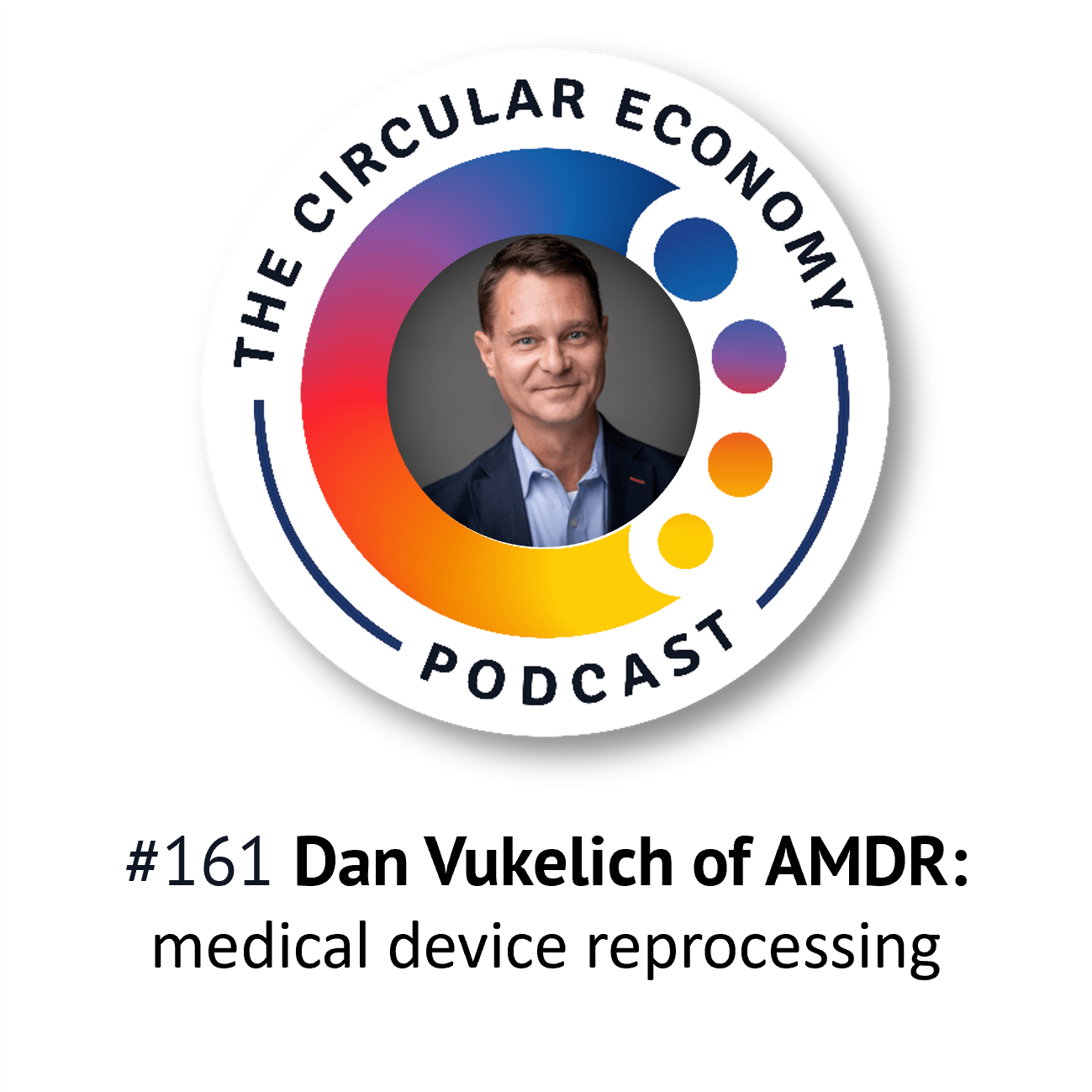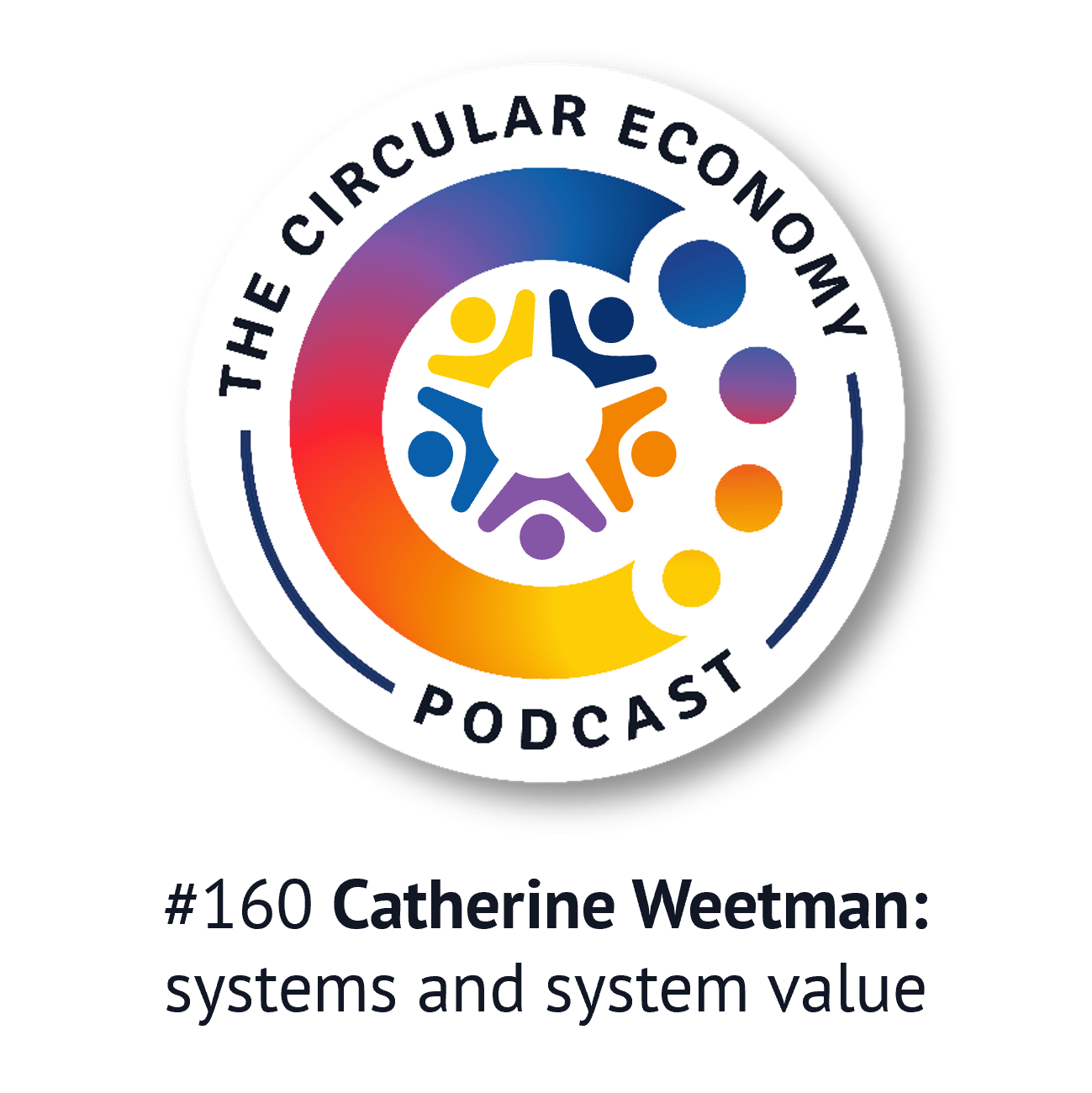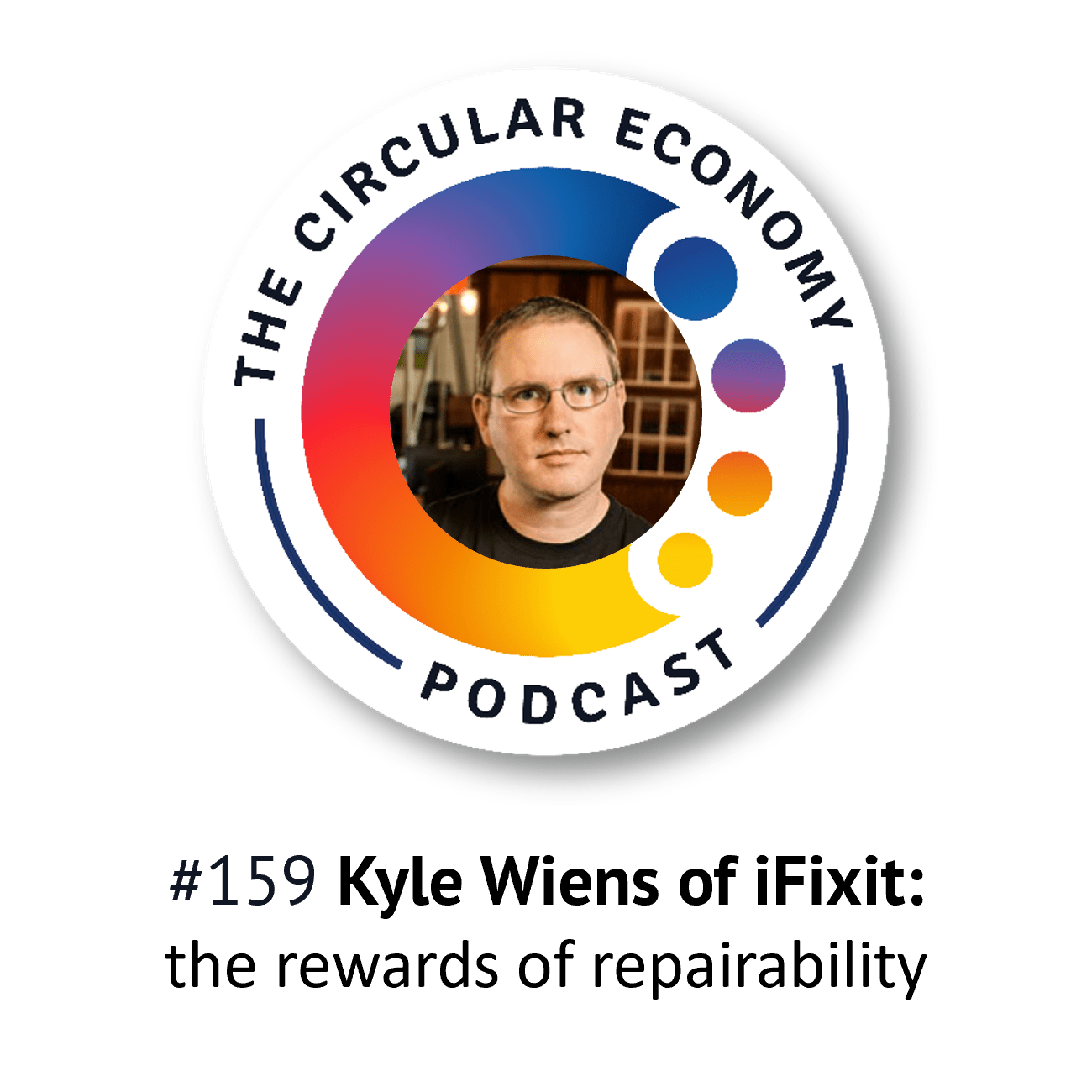Podcast: Play in new window | Download
In this episode, Elaine Kerr, Deputy Director of International Synergies Northern Ireland, talks to Catherine Weetman about industrial symbiosis and how it ‘oils the wheels’ of the circular economy.
Elaine explains what industrial symbiosis is, and how International Synergies provides research and facilitation for ‘resource matching’, helping organisations of all types and sizes.
We discuss the multiple benefits of industrial symbiosis: reducing waste and pollution (and associated costs); creating valuable new by-products, jobs and social value; together with securing access to future resources by setting up local ‘ecosystems’ for materials.
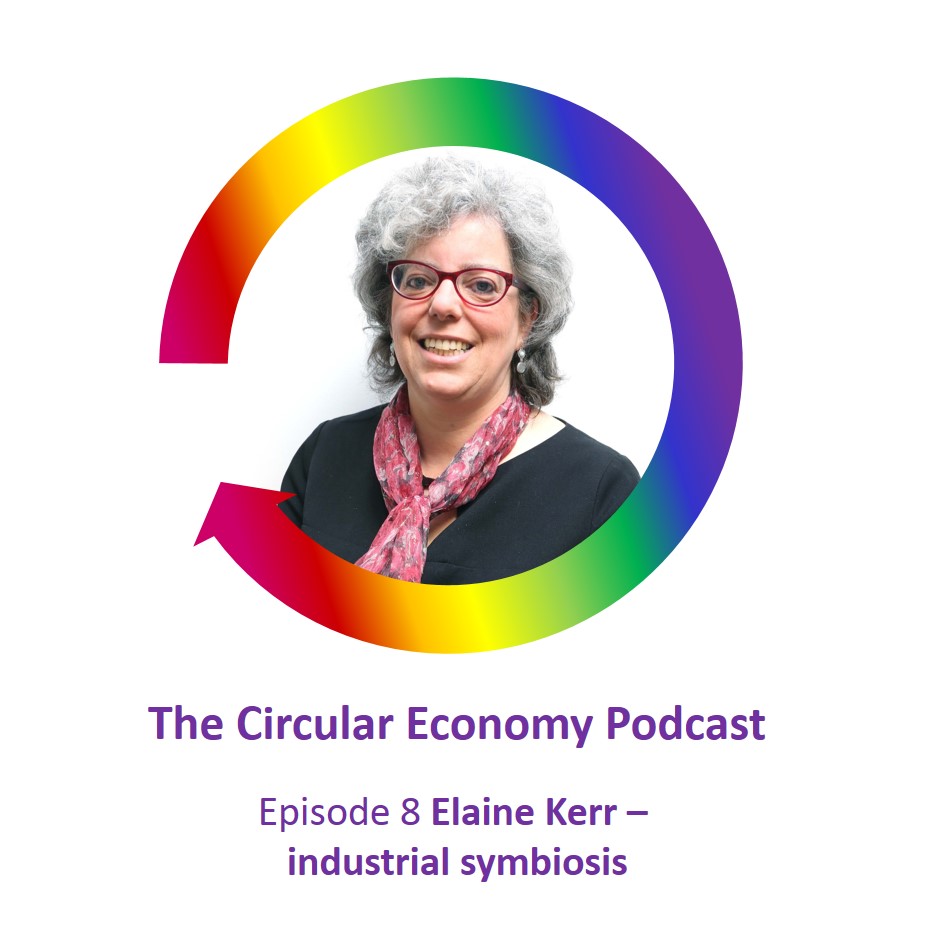
Elaine tells us how creating new, local feedstocks from redundant resources can also bring widespread benefits for the local economy, by helping improve economic prosperity and resilience.
We talk about changing attitudes and the ways young entrepreneurs and social enterprises are creating value from what we used to think of as ‘waste’.
Read on for a summary of the podcast and links to the people, organisations and other resources we mention.
Elaine Kerr
Elaine is Deputy Director for International Synergies Northern Ireland, and has been a key player in the evolution of the Industrial Symbiosis Service since its inception in 2007.
Elaine’s 12 years’ experience in identifying and progressing industrial symbiosis solutions for businesses from all sectors have helped Invest Northern Ireland meet its regional economic development objectives whilst also helping Northern Ireland businesses save over £25.7 million, increased sales by £16.4 million and create over 100 jobs.
In addition, the work reduced carbon emissions by 352,000 tonnes and has diverted almost 400,000 tonnes of waste from landfill.
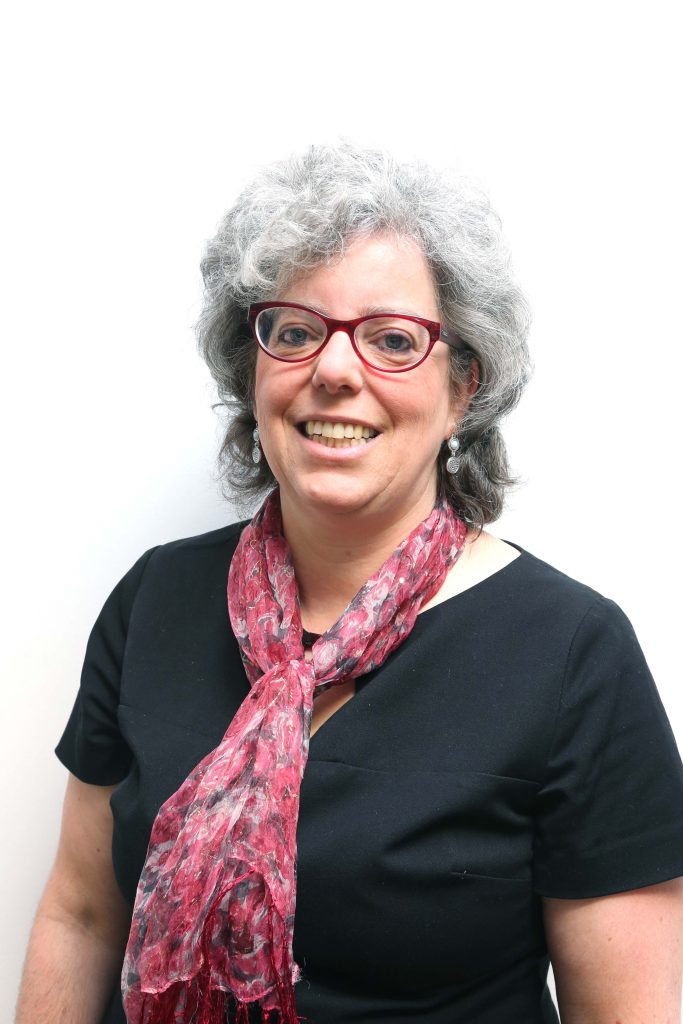
What is Industrial Symbiosis?
Symbiosis, the Greek word for ‘living together’, is any relationship between different things, people, or groups that benefits all those involved. An example from nature is between trees and fungi, which help provide nutrients to each other.
Industrial symbioses are an important part of the circular economy, using the principle of waste = food. In other words, using the waste from one organisation to replace virgin resources for another, at the same localising supply and reducing costs.
One of the most famous and large-scale examples is the Kalundborg Symbiosis project, in Denmark. It started in 1972, and there are now nine industrial partners exchanging a wide range of materials and resources. There are videos and an interactive map on the Kalundborg Symbiosis website showing the partners and the flows.
Science Direct defines Industrial Symbiosis as “the sharing of a by-product or service that would otherwise have been disposed of or underused in order to minimise waste and maximise the utility of resources. [From: Renewable and Sustainable Energy Reviews, 2014]
In practice, it can be hard to find partners, and it needs knowledge, time and effort to set up an exchange network. Building mutual trust between the parties often needs ongoing facilitation and support, and this is where organisations like International Synergies can help out.
International Synergies
International Synergies was established in 2005 and is widely acknowledged for its expertise in devising and managing industrial symbiosis programmes across five continents working with public and private sector clients, institutions and the research community.
The company’s demand-led facilitative approach of implementing industrial symbiosis has received global recognition and is cited as best practice within the European Waste Framework Directive and for systemic innovation vital for future green growth by the OECD.
Often described as “the circular economy in action”, its projects are included as best practice examples in Governments Go Circular, as well as being one of the world’s top 20 ‘Green Game-Changing’ innovations identified by the World Wild Fund for Nature.
It employs staff across three offices; Birmingham in the UK (Head office), Belfast in Northern Ireland and Brussels, in Belgium. International Synergies is also a member of UNEP’s Climate Technology Centre & Network and has won several awards or sustainability, export, expertise, climate change mitigation, and innovation.
It has assisted in the setup and implementation of industrial symbiosis projects in over 20 countries and all the projects are acknowledged for their contribution to boosting economies whilst delivering significant environmental and social benefits.
Podcast sections
[00:00] We talk a little bit about Elaine’s background, and how she got involved in Northern Ireland’s industrial symbiosis programme.
Industrial Symbiosis in Northern Ireland
[04:18] Elaine tells us about the programme which delivered benefits for businesses in the first three months. She explains how it has become a key enabler for businesses across Northern Ireland and is supported by Invest Northern Ireland (Invest NI), the Economic Development Agency for Northern Ireland.
[06:43] Elaine explains more about industrial symbiosis, and how the International Synergies approach works in practice. Put simply, it’s ‘speed dating’ for resources. Skilled, experienced facilitators often start with where the company is ‘itching’, but always check the end-to-end process for other opportunities. They use innovative approaches, finding ways to manoeuvre around problems and barriers. They will often find ways to both improve resource efficiency and reduce waste, helping businesses save money, secure future resources, create local jobs and much more.
We touch on International Synergies’ resource matching database and how new artificial intelligence developments are enhancing this.
[13:29] We discuss the way to create local resource ‘ecosystems’, including a case study on the re-use of post-industrial PVC, which was so successful it started to use post-consumer PVC as well.
The Blue Planet – transforming attitudes
[18:00] Elaine talks about the shift in awareness and attitudes, helped by David Attenborough’s TV programmes on waste plastic and other human-caused issues affecting oceans worldwide. She feels people and businesses are much more open now, looking for opportunities to do something better, for business, society and our living planet. Organisations are seeing productivity and environmental compliance as complementary, and Catherine agrees that seeing waste as a resource, a ‘food’ for another industrial process (or nature) helps you then think about how you could extract the highest value from it, rather than paying to dispose of it. Companies are starting to think more about risks, and looking at how they can use recycled or redundant materials to replace finite, virgin resources.
Entrepreneurs and social enterprises tapping into industrial symbiosis
[22:23] Young entrepreneurs are actively looking to use materials that are considered ‘redundant’ by another company or industry, and Elaine describes a local start-up that upcycles lorry tarpaulins and offcuts from life-raft production into high-end Yoga and activity bags.
[24:03] Social enterprises in Northern Ireland are shifting their focus, creating value from waste resources so they can become financially self-reliant (instead of depending on external grants, donations and so on). By making products from redundant materials, they are creating new jobs and upskilling local disadvantaged people who gain confidence and new skills. This is another example of how industrial symbiosis can create social and local value, as well as reducing pollution and ecosystem damage.
The circular economy is picking up speed
[27:48] Elaine feels the circular economy ‘wheel’ is picking up speed, and she is noticing lots of behavioural change, especially for plastics. People are thinking about potential new by-products, not ‘waste’. A key to this is how we frame our language: for example, we should talk about ‘wasted resources’ or ‘under-utilised resources’, not just ‘waste’.
The world’s longest-running industrial symbiosis programme
[30:33] Starting back in 2007, the International Synergies project in Northern Irelan, is now the longest-running industrial symbiosis programme in the world. Using an example of redistributing sleeping bags to the homeless, Elaine explains how their highly-experienced facilitators use their extensive knowledge, contacts and research methods to create value from redundant materials and products.
[33:39] Elaine tells us about how industrial symbiosis is helping to solve a problem faced by lots of towns and cities around the world – what to do with waste coffee grounds! Catherine recommends Circle Economy’s Circle Lab circular economy database, now with over 2000 examples including some from Catherine’s database. It includes all the examples from the Circular Economy Club global mapping week in 2018.
[38:13] We talk about International Synergies’ plans for the future, expanding beyond the (impressive) current list of 30 projects on five continents. Elaine sees industrial symbiosis as the lubricating ‘oil’ that makes the circular economy work, facilitating the introductions, ideas, and innovations that make the whole system come together.
The aim is to have a society where there is no such thing as waste – if we don’t have a use for it, how can we ensure it becomes a viable resource for someone else?
[41:08] We wrap up the conversation and Elaine tells us the best way to get in touch is by phone…
To find out more about the circular economy, listen to Episode 1 and read our guide: What is the Circular Economy.
Why not sign up for the latest episode and insights, straight to your inbox?
Links we mention in the episode:
- You can connect with Elaine on LinkedIn https://www.linkedin.com/in/elaine-kerr-0bb4ab26/
- International Synergies website https://www.international-synergies.com and follow them on Twitter https://twitter.com/IntlSynergies
- Industrial Symbiosis explained https://web.archive.org/web/20210506224653/https://www.international-synergies.com/our-approach/what-is-industrial-symbiosis/
- International Synergies Northern Ireland : Office +44 (0) 28 3833 3438 Website : www.international-synergiesni.com
- You can also connect with International Synergies Northern Ireland on Twitter https://twitter.com/Int_SynergiesNI or on Facebook
- Invest Northern Ireland Industrial Symbiosis webpage https://www.investni.com/support-for-business/industrial-symbiosis.html
We also mentioned:
- Circle Economy’s Circle Lab circular economy database, https://knowledge-hub.circle-economy.com/ with over 2000 examples including those from the Circular Economy Club global mapping week in 2018
Greencup coffee – roasters and recyclers http://greencup.co.uk/
Want to find out more about the circular economy?
If you’d like to learn more about the circular economy and how it could help your business, why not listen to Episode 1, or read our guide: What is the Circular Economy?
To go deeper, you could buy Catherine’s book, A Circular Economy Handbook for Business and Supply Chains. This takes a bottom-up, practical approach, with lots of real examples from around the world. It helps you really ‘get’ the circular economy, and come up with ideas to make your own business more competitive, resilient and sustainable.
Please let us know what you think of the podcast… and why not help accelerate the circular economy by helping others find us – please leave a review on iTunes, or wherever you find your podcasts. Or send us a Tweet: @Rethink_Global
Podcast music
Thanks to Belinda O’Hooley and Heidi Tidow, otherwise known as the brilliant, inventive and generous folk duo, O’Hooley & Tidow for allowing me to use the instrumentals from the live version of Summat’s Brewin’ as music for the podcast. You can find the whole track (inspired by the Copper Family song “Oh Good Ale”) on their album, also called Summat’s Brewin’. Follow them on Twitter @OHooleyandTidow.
